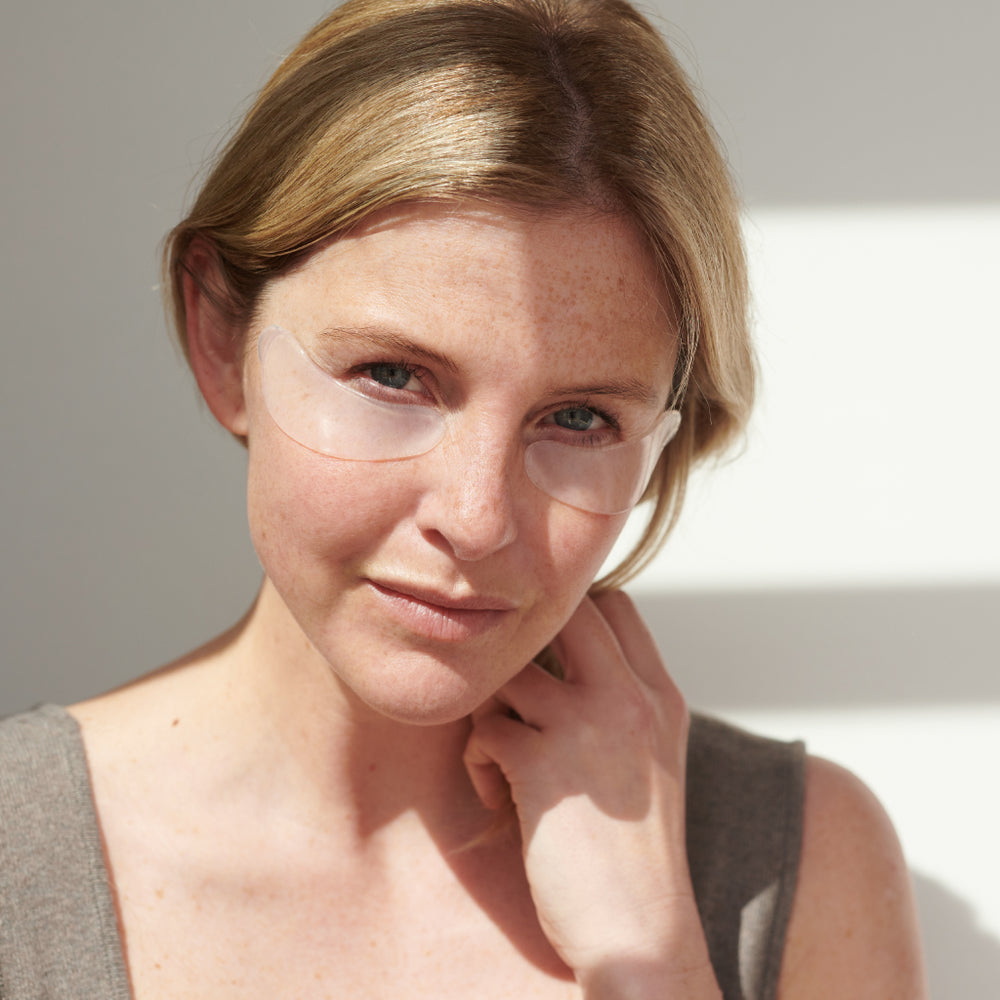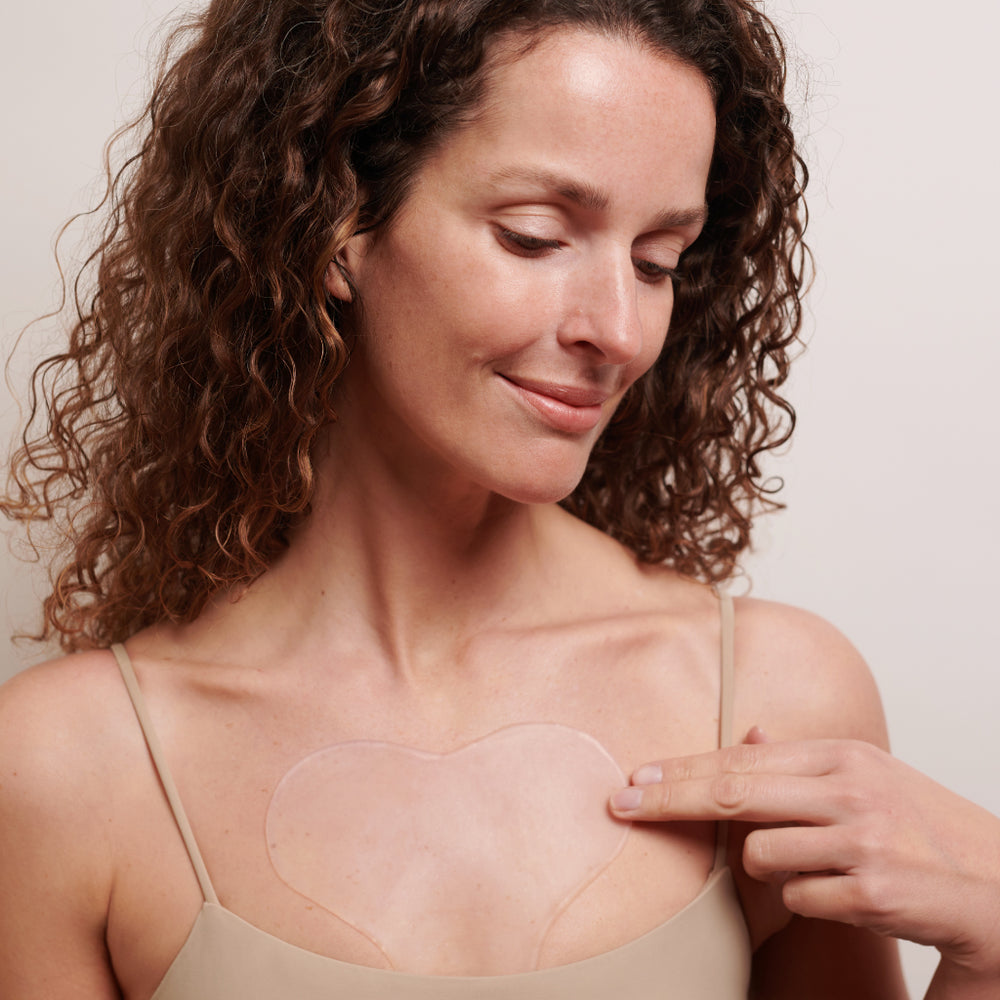Wechseljahre & Haut: Was jetzt wichtig ist
Menopause is a time of hormonal change that can have a profound impact on the skin. Many women suddenly notice blemishes, redness, enlarged pores, or general dryness during this phase. In this article, you'll learn why your skin changes during menopause, which skin problems are particularly common, and how you can counteract them with the right facial care.
What exactly happens during menopause?
Menopause is a natural phase in every woman's life, usually beginning between the ages of 45 and 55—on average, around 51. Menopause occurs when menstruation stops for twelve months. This hormonal change marks the end of fertility and is accompanied by many physical changes:
-
The function of the ovaries decreases
-
Estrogen levels drop significantly
-
Typical side effects such as hot flashes, sleep problems – and also skin changes

Already at the onset of menopause, there is a rapid decline in collagen and elastin in the skin. Over time, this breakdown slows but remains. The consequences: thinner skin, wrinkles, loss of volume, and increased vulnerability. Many women also report increased skin dryness during this time, which can lead to tightness or flaking.
Why does skin change during menopause?
The main trigger for skin problems during menopause is declining estrogen levels. Estrogen is important for collagen formation, moisture retention, and skin elasticity. When this hormone level drops, the skin becomes thinner, drier, and less elastic. At the same time, the influence of androgens (male hormones) increases, which can stimulate sebum production. The result: blemished, oily skin and enlarged pores.
Stress, lack of sleep, and external environmental influences also have a greater impact on the skin during this time. Because the protective barrier is weakened, the skin reacts more sensitively to UV radiation, pollutants, and skincare products.
Typical facial skin problems during menopause
Impure skin & oily skin
Many women develop so-called late-onset acne during menopause. This is caused by increased sebum production caused by androgens. The skin appears oily, pores clog more easily, and blackheads and pimples develop – even in women who never had acne before.
Tip: Gentle cleansing and targeted active ingredients such as niacinamide or zinc help combat impurities without drying out the skin.
Large-pored skin
With increasing age and decreasing skin elasticity, the pores expand. The excess sebum makes them appear larger. Large-pored skin appears uneven and lackluster.
Tip: Active ingredients such as Niacinamide can visibly refine pores and improve the appearance of the skin.
Red spots & rashes
Hot flashes, stress, or changes in vascular activity lead to sudden redness or red spots on the face. Rashes also occur more frequently as the skin becomes more sensitive to ingredients or environmental influences.
Tip: Use non-irritating skincare without fragrances or alcohol. Persistent redness may be a sign of rosacea—speak to a dermatologist.
Rosacea
Menopause can worsen existing rosacea or trigger it for the first time. Typical symptoms include sudden bouts of redness, visible veins, papules, or pustules on the face.
Tip: Cooling care, avoiding alcohol, spicy foods and extreme temperature fluctuations help to prevent rosacea flare-ups.
Dry skin & wrinkles
Declining estrogen levels lead to less hyaluronic acid and a weaker skin barrier. The skin loses moisture, becomes dry, flaky, and wrinkles more quickly.
Facial care during menopause: What really helps?
Proper facial care during menopause should be gentle, moisturizing, and regenerating. Here are our top recommendations:
1. Gentle cleansing
Use mild cleansing products without harsh surfactants like sodium lauryl sulfate (SLS), sodium laureth sulfate (SLES), or ammonium lauryl sulfate, which can severely dry and irritate the skin. Gentler alternatives like coco glucoside, decyl glucoside, or sodium cocoyl glutamate are more suitable. These cleanse effectively without weakening the skin's protective barrier. Cleansing lotions or oils that gently cleanse and condition the skin are ideal.
2. Moisture is key
Dry skin benefits from creams containing hyaluronic acid, glycerin, and ceramides. Light formulas are recommended during the day, while richer formulations are recommended at night.
Product tip: The Ectoin Pads and Aloe vera Pads can be stored in the refrigerator and provide pleasant cooling for heat, redness, or sensitive skin. Especially if you suffer from typical hot flashes during menopause, the use of these PadIt can be soothing. Ectoin soothes the skin and strengthens the skin barrier, while aloe vera has moisturizing and anti-inflammatory properties—ideal for menopausal skin problems.
3.Don't forget sun protection
UV protection is especially important during menopause. Use a daily moisturizer with at least SPF 30 to prevent dark spots, wrinkles, and rosacea flare-ups.
4. Less is more
Avoid using too many products. A clear skincare routine with a few, well-balanced active ingredients is usually more effective than a mix of different cosmetics.
Skin problems during menopause: Think holistically
In addition to care, lifestyle factors also play an important role:
- Maintain a balanced, anti-inflammatory diet
- Drink enough water
- Avoid cigarettes and alcohol
- Ensure sufficient sleep and relaxation
Stress management has been proven to alleviate skin problems. Exercise in the fresh air also promotes circulation and improves the appearance of the skin.
Conclusion
Menopause brings with it visible skin changes: from blemished, oily skin to redness, wrinkles, and dry skin. It's crucial to adapt your skincare routine to your new needs and not overwhelm your skin. With targeted care, suitable products, and a conscious lifestyle, you can keep your skin healthy, clear, and radiant – at every stage of life.
Sources:
Kamp, E., Ashraf, M., Musbahi, E., & DeGiovanni, C. (2022). Menopause, skin and common dermatoses. Part 2: skin disorders. Clinical and Experimental Dermatology, 47(12), 2117–2122. https://doi.org/10.1111/ced.15308





